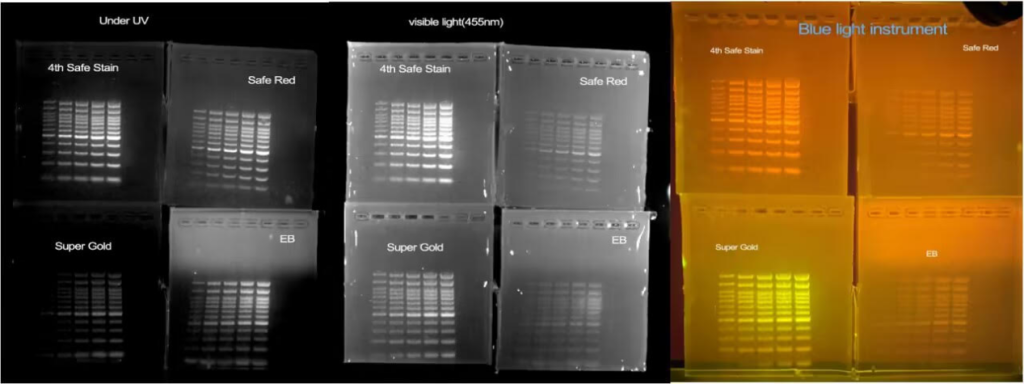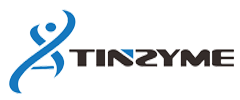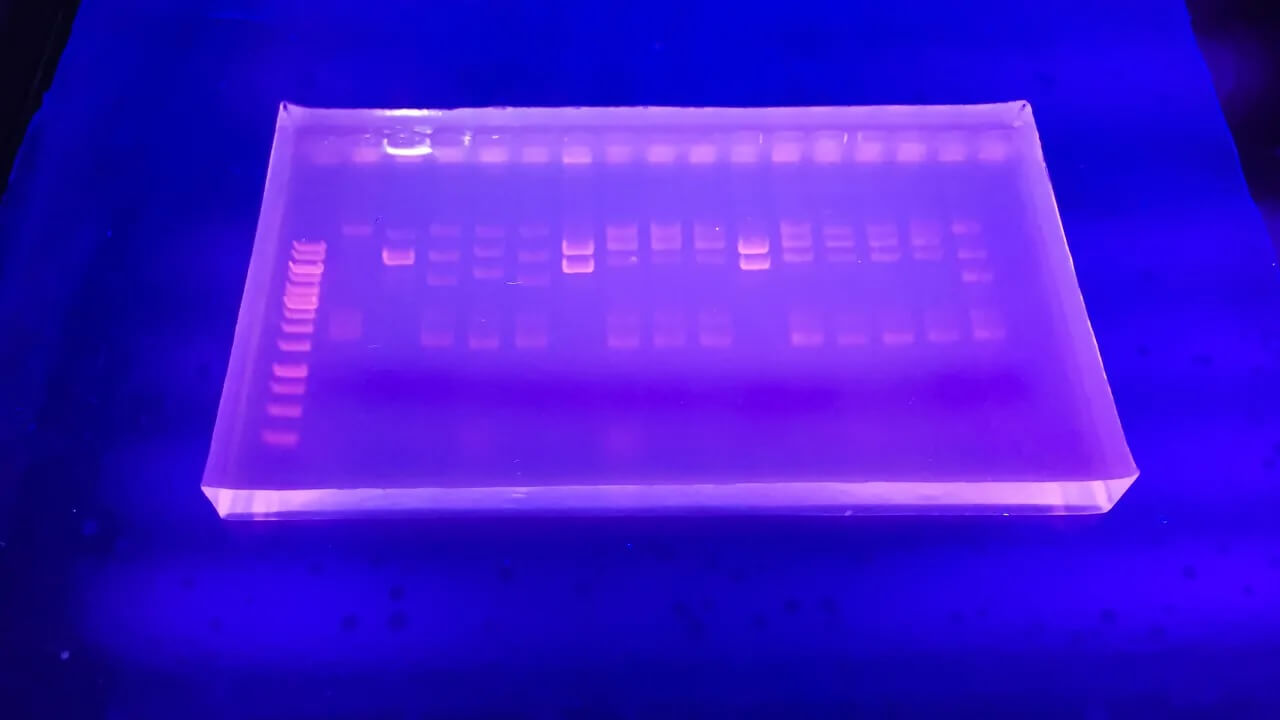Safe Stain Nucleic Acid Gel Stain is a kind of new generation of fluorescent nucleic acid gel stain designed to replace the highly toxic ethidium bromide (EtBr). The Ames test confirmed that are nonmutagenic at concentrations well above their working concentrations used for gel staining. Nucleic Acid Gel Stain is highly sensitive than EtBr either as precast gel stains or post gel stains.
Safe Stain and EB have virtually the same spectra, so you can directly replace EB with Safe Stain without changing your existing imaging system. Safe Stain cannot be sufficiently excited with a 488nm argon laser or similar visible light. Safe Stain can also be used to stain dsDNA, ssDNA or RNA in polyacrylamide gel via post gel staining. Precast polyacrylamide gel staining with Safe Stain is not recommended because of relatively high background fluorescence.
Safe Stain Nucleic Acid Gel Stain 10,000x in DMSO is a concentrated solution that can be diluted 10,000 times for use in precast gel staining for ~3,300 times for use in post gel staining according to the procedures described below. One vial (0.5ml) of 10,000x solution can be used to prepare at 100 precast minigels or post-stain at least 100 minigels.
Gel staining with Safe Stain is compatible with downstream applications such as gel extraction and cloning. Safe Stain is efficiently removed from DNA by phenol/chloroform extraction and ethanol precipitation.

Safe Stain nucleic acid dye features
- The band shape is clear and neat: The fourth generation Safe Stain completely overcomes the shortcomings of the original foreign GelRed dye that cannot separate large fragments of DNA, and the electrophoresis strips are clear, neat and beautiful.
- Relatively safe: The unique oily macromolecule (molecular weight >1000) prevents it from penetrating the cell membrane and entering the cells. At the concentration of coagulation staining, the dye does not have mutagenicity similar to EB. It is relatively safe to use and can replace the carcinogen ethidium. EB is used as a stain for various nucleic acid electrophoresis.
- Perfect compatibility: Safe Stain is the world’s first dye that is compatible with all nucleic acid imagers (UV imagers, laser imagers and blue light cameras)! It has similar spectral stability to EB and Sybr Green, without changing filters and Observation device: Standard EB light sheet or SYBR filter are suitable.

- The world’s first Page glue, the strips can be observed with the naked eye under laboratory lights, without the need for ultraviolet and blue light excitation.
- Good mobility: EB small molecules quickly run out of the gel, so EB can easily cause small DNA fragments to be invisible. Large molecule Safe Stain completely overcomes this problem.
- Accurate quantification: It is suitable for determining and quantifying the size of nucleic acid molecules. EB is not accurate for quantifying small DNA fragments.
- Uniform staining: During electrophoresis, the staining is even and the background of the entire gel is the same. EB will cause the overall background of the gel to be different, and yin and yang backgrounds often appear (part of the background of the gel is bright, and the other part is dark); if EB is electrophoresed for a long time and over a long distance, the EB signal intensity will decrease accordingly. Our large molecule Safe Stain completely overcomes this.
- High sensitivity: suitable for electrophoresis staining of fragments of various sizes, and has less impact on nucleic acid migration than SYBR Green I.
- High stability: suitable for preparing agarose gel using microwave or other heating methods, stable in acid or alkali buffer at room temperature.
- Strong light resistance: it can be stored at room temperature for 24 months in the daily laboratory environment.
- Good signal-to-noise ratio: The sample has strong fluorescence signal and low background signal. The naked eye can see that the brightness is obviously stronger than that of EB. EB will cause the overall background of the glue to be slightly higher, and yin and yang backgrounds often appear.
- Simple operation: exactly the same as EB usage, the dye will not degrade during the precast gel and electrophoresis process; and the staining process after electrophoresis only takes 30 minutes and does not require destaining or rinsing.
- Wide range of applications: you can choose pre-electrophoresis staining (gel dyeing method) or post-electrophoresis staining (soak dyeing method), suitable for agarose gel or polyacrylamide gel electrophoresis; can be used for dsDNA, ssDNA or RNA staining.



